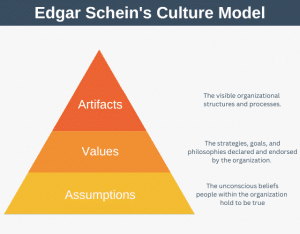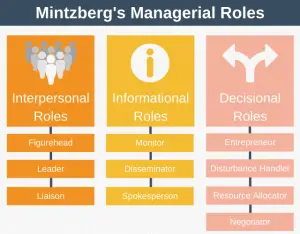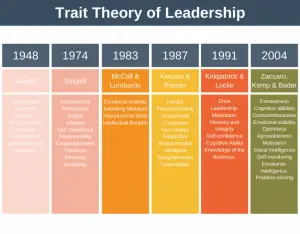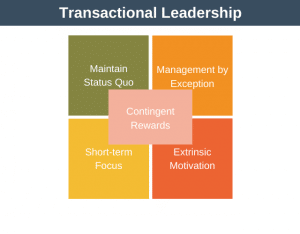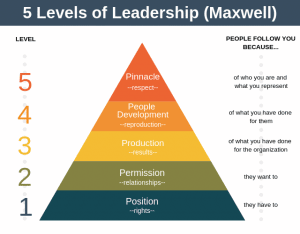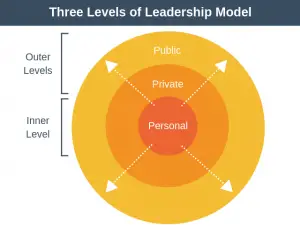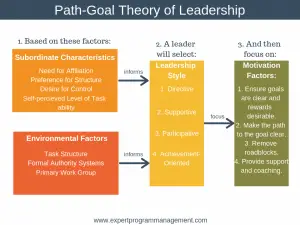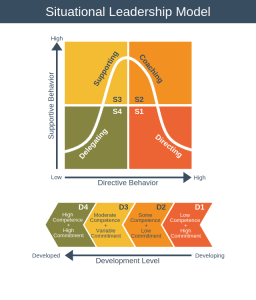As a leader, the six leadership styles by Daniel Goleman provide you with a toolbox of leadership styles you can choose between to meet any situation you face, all while staying true to your values and principles.
Background
Daniel Goleman is an American author, psychologist, and science journalist. He is best known for his 1995 book, “Emotional Intelligence: Why It Can Matter More Than IQ.“
Goleman first wrote about his six leadership styles in a Harvard Business Review article in 2000. He expanded on these ideas in his 2001 book, “Primal Leadership: Unleashing the Power of Emotional Intelligence.“
In business culture, and even in popular culture, there is a narrative that leaders are born and not bread. This narrative says that, for whatever reason, some people have a natural instinct for leadership and rise to the top because of it.
This narrative leads many people to assume that their leadership style is a function of their personality rather than a deliberate choice.
Goleman argues that this narrative is incorrect and that the best leaders choose their leadership style to suit the situation.
Goleman identified six leadership styles, each rooted in emotional intelligence, with each style drawing in different proportions on the set of components that make up emotional intelligence (EQ).
Unlike the ideas of many leadership experts, Goleman’s ideas are based on research from consulting firm Hay/McBer, which collected data from 3,871 randomly selected executives.
The most significant finding from the data was that the best leaders don’t rely on one leadership style; they change style based on the business situation they’re facing, using different styles multiple times per week.
Understanding Climate
As well as impacting your organization’s results, the six leadership styles will also affect its climate.
Climate, as defined by McClelland, consists of six factors that influence an organization’s environment:
- Flexibility: how burdened by red tape employees feel.
- Responsibility: employee’s level of commitment to the organization.
- Standards: what level of standards employees set.
- Rewards: the appropriateness of rewards.
- Clarity: how clear employees are about the vision and values.
- Commitment: the extent to which employees are committed to a common purpose.
The table below shows how each of the six leadership styles impacts climate. This table shows the correlation between each leadership style and each aspect of climate. As you can see, the authoritative style has the most positive effect on climate, and the coercive style has the most negative effect.
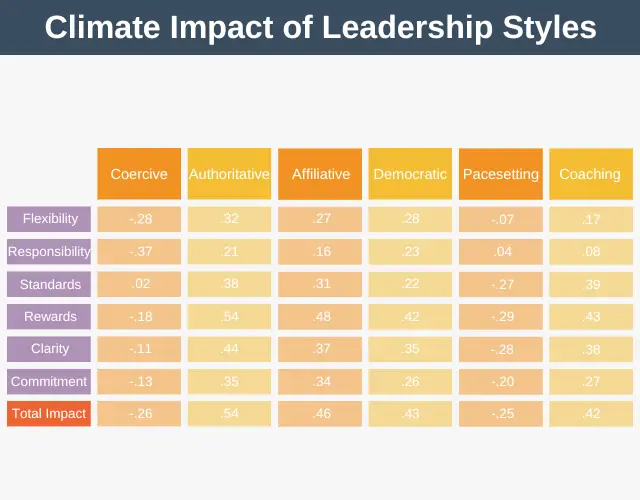
The Six Leadership Styles
The six leadership styles Goleman proposed are:
- Coercive: you demand compliance.
- Authoritative: you mobilize people towards your vision.
- Affiliate: you create emotional bonds and harmony.
- Democratic: you build consensus through participation.
- Pacesetting: you expect high performance and self-direction.
- Coaching: you focus on developing your people.
Four leadership styles are considered resonant (authoritative, democratic, affiliative, and coaching), meaning they drive teamwork and loyalty. The other two are dissonant, focusing solely on reaching a goal and getting results rather than creating happy teams or individuals.
Let’s look at each of the six leadership styles in more detail.
1. Coercive Leadership
Coercive leadership can be summed up by the phrase, “Do what I tell you.”
With coercive leadership, you use threats and rewards to get what you want. You make all the decisions and issue orders to your team. In this leadership style, most communication flows just one way, from you to your team.
When to Use It
You should only use coercive leadership in emergency situations, for example, if your organization requires a rapid turnaround or you have a problem employee with whom all other approaches have failed.
How to Use It
To use coercive leadership:
- Have a laser-focused objective you want to achieve quickly.
- Ensure everyone knows what it is they have to do.
- Ensure your team has the knowledge and tools they need.
- Reward team members for compliance with your instructions.
Advantages
Coercive leadership can help “shock” your team from the standard way of doing things when the situation calls for it, and it can have a short-term positive impact on motivation. It is the most appropriate style when your objective is known, and execution speed is all that matters. That’s why you can find this leadership style on the battlefield.
Disadvantages
Coercive leadership has the most significant negative impact on climate. For example, a team member may feel so disrespected that they don’t raise good ideas or issues with you. They will no longer feel responsible for their work, so their sense of accountability for their performance diminishes.
As already said, you should only use the coercive style in emergencies. If you try to use this style beyond the initial crisis, it can destroy your team’s morale leading to disastrous performance.
2. Authoritative Leadership
Authoritative leadership can be summed up by the phrase, “Come with me.”
Using an authoritative leadership style, also known as a visionary leadership style, you are enthusiastic and future-focused. You have a clear vision and inspire your team to achieve it.
As an authoritative leader, you set the vision and encourage your team to achieve this vision. You provide the end goal but leave it up to your team to devise the means. You offer guidance and feedback along the way, maintaining enthusiasm to keep momentum toward your vision.
Employees working for an authoritative leader understand how what they do matters and why.
When to Use It
Authoritative leadership works best when an organization is adrift. This style allows you to set a new direction and sell your people on this new vision and direction.
How to Use It
To use authoritative leadership:
- Set a clear vision for the future.
- State your vision clearly but leave execution up to your team.
- Help your team to problem solve.
- Judge each individual’s performance based on a single criterion: did it further the vision?
- Show empathy towards individuals. By understanding each individual’s personal and professional desires and worries, you will be better able to identify and remove potential roadblocks to performance.
Advantages
Authoritative leadership brings clarity. The team knows where they are going and how their actions contribute to the vision. It creates goodwill in your team as you lead with empathy and clear roadblocks to help them succeed. This creates a positive working environment.
Disadvantages
As an authoritative leader, the direction is set by you alone; there is no team consensus involved. Thus, if you make a mistake, it is important to own that mistake to enable the team to refocus positively on a new goal.
Authoritative leaders can also come across as overbearing because of their prescriptive approach.
3. Affiliative Leadership
Affiliative leadership can be summed up by the phrase, “People come first.”
As an affiliative leader, you put people first, being supportive and helpful, resulting in trust and loyalty. By putting people first, you build strong bonds first that you can then reap rewards from later.
As an affiliative leader, you are a relationship builder. You will likely bring a cake to celebrate a team member’s birthday or take a direct report out to lunch to see how they’re doing.
When to Use It
Affiliative leadership is an excellent approach to use generally but is particularly effective when trying to build team cohesion, improve communication, increase morale, and repair broken trust.
Alternating the affiliative style with the authoritative style is a potent leadership combination.
How to Use It
To use affiliative leadership:
- Give team members the breathing space they need to make their own decisions.
- When giving feedback, ensure it’s positive instead of focusing on the negatives.
- Make an effort to bond with each team member: remember their birthday, praise them in front of other team members when they do something well, and take them out for lunch occasionally.
Advantages
Affiliative leadership results in employees feeling more comfortable communicating and makes them feel comfortable taking risks and trying to do things in new ways. Because of the focus on relationships, it can result in very loyal team members.
Disadvantages
Relying on this leadership style alone can lead to poor performance going uncorrected, and it also leaves employees to figure out for themselves what they need to do to improve. Too much reliance on the affiliative style can lead to failure, as your team is without direction because you are focused on making everyone happy rather than making tough decisions.
4. Democratic Leadership
Democratic leadership can be summed up by the phrase, “What do you think?”
As a democratic leader, you take the time to listen to employees’ ideas and get their buy-in. By involving them in the decision-making process, you earn their respect and commitment. Team members see you as a facilitator rather than a dictator.
When to Use It
Democratic leadership works best when you, as the leader, are unsure about the direction to take. This even applies if you have a strong vision you ultimately want to achieve, as it can help you discover new ideas to achieve that vision. It also works well when you want to achieve consensus and buy-in on the way forward from your team.
How to Use It
To use democratic leadership:
- Involve your team members in the decision-making process.
- Ensure that the time is available for people to understand the problem, deliberate, and decide on a course of action.
- Set deadlines to ensure decision-making doesn’t overrun.
- Allow everyone the opportunity to express their opinion.
Advantages
Democratic leadership can result in high morale as team members feel they have a say in decision-making. It can also lead to high buy-in levels as team members helped create the plan from the ground up, so it has their implicit approval.
Disadvantages
Building a consensus can be very time-consuming, so it is inappropriate when execution speed is critical. It can also lead to deadlock if team members cannot agree on how to proceed. Finally, using this approach doesn’t make sense when your team is not informed enough to contribute sensible solutions.
5. Pacesetting Leadership
Pacesetting leadership can be summed up by the phrase, “Do as I do.”
As a pacesetting leader, you set a very high-performance standard and expect everyone else to follow your lead. If they can’t match your high standards, they are replaced with people who can. When you use this leadership style, you are focussed on doing things better and faster.
When to Use It
You might think that the pacesetting style results in a high-performance team, but this isn’t the case. The pacesetting style has a very negative impact on climate, so you should use it sparingly.
You should only use the style in short bursts to get fast results from a competent and motivated team.
How to Use It
To use pacesetting leadership:
- Give your team any tools they require to do their job effectively.
- Lead by example: Show the level you expect your team to perform at, including pace, attitude, and quality of work.
- Set standards as high for yourself as you do for others.
- Communicate your expectations and deadlines clearly, but don’t micromanage.
- Scan for opportunities to do things faster and better.
Advantages
The pacesetting style can help you achieve quick results from a competent team, and it can be motivating when used for a short period of time.
Disadvantages
Climate suffers negatively under the pacesetting style, as team members become overwhelmed by your demands for excellence. Team members start to second guess what you want because of a lack of two-way communication and interaction. Team members don’t feel trusted to figure out how to solve problems in their own way.
6. Coaching Leadership
The last of the six leadership styles is coaching leadership, which can be summed up by the phrase, “Try this.”
As a coaching leader, you develop your team through one-to-one interaction and coaching. You understand that you can’t build a high-performing team overnight, so you invest the time to develop your team over the long term.
You understand each team member’s strengths and weaknesses and link these to their career aspirations. You help each team member set long-term goals and build a plan to achieve those goals.
As they progress through their plans, you give constructive feedback and guidance.
When to Use It
The coaching style is most appropriate for people who want to be coached. These employees are open to working on their weaknesses and improving their performance to advance their careers.
How to Use It
To use coaching leadership:
- Ensure every employee has clear goals and objectives.
- Link their goals and objectives to your vision.
- Ensure every team member has a plan to reach their goals and objectives.
- Provide regular feedback and guidance to support each employee as they work through their plan to reach their goals.
- Celebrate success along the way to keep team members motivated.
Advantages
Using the coaching leadership style, you link employees’ career goals to their everyday duties, increasing their motivation and effectiveness. This style has a positive effect on climate because it encourages constant dialogue, and that dialogue increases all of the factors that contribute to climate.
Disadvantages
The coaching style can require a significant time commitment and only works if employees want to engage with being coached. It is more focused on achieving long-term results rather than short-term results. Finally, it doesn’t make sense to use this style if you are not experienced enough to successfully guide your employee.
What Leadership Style Should I Use?
As you’ve just discovered, which of the six leadership styles you should use depends on your situation.
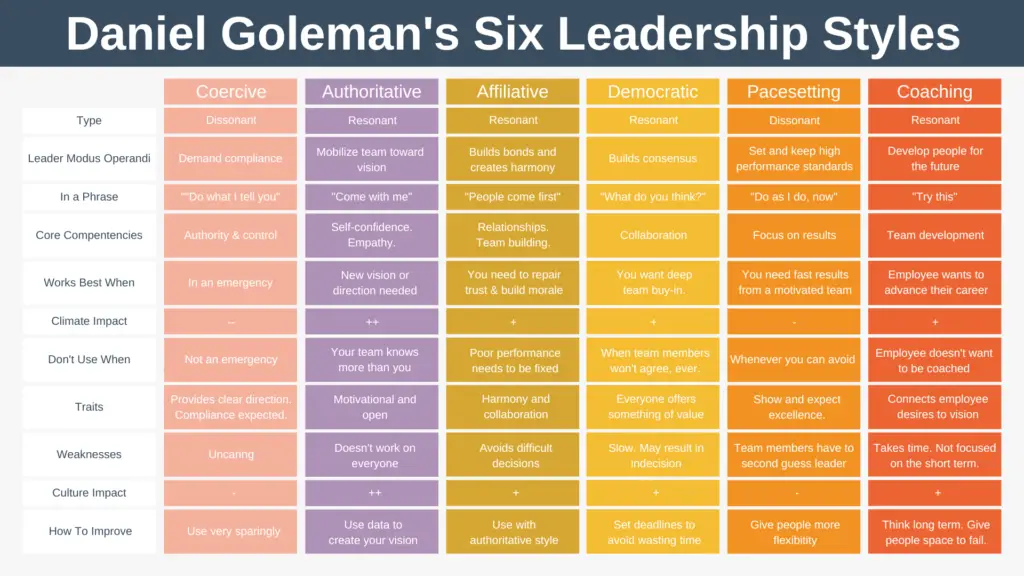
Until you get the hang of effortlessly switching between the six leadership styles, you might find it helpful to print or screenshot this image and keep it handy, so you can easily see which leadership style might be most appropriate for any situation you face.
You can download this image (our Six Leadership Styles Template) as a PDF here.
As your skill improves at moving between the six leadership styles, you may start to look at them as a seasoned golfer looks at their clubs. Generally, you can pick the right club for the situation without thinking too much, but occasionally, you may have to think more deeply to ensure you have the best club for the shot.
Summary
As a leader, the six leadership styles by Daniel Goleman provide you with a toolbox of leadership styles you can choose between to meet any situation you face, all while staying true to your values and principles.
